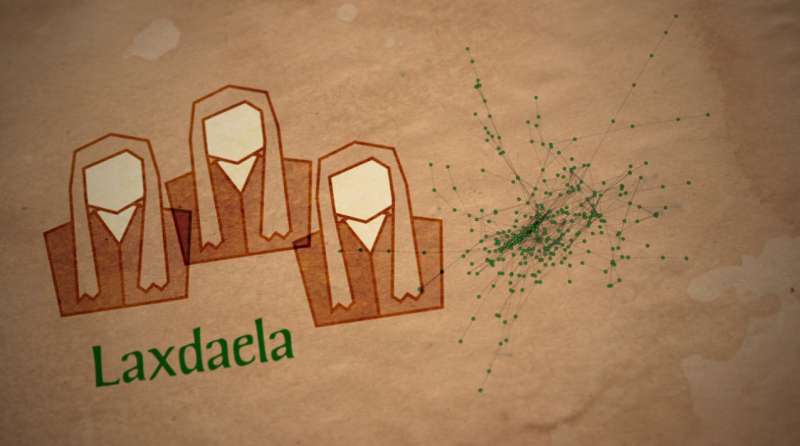Modern math sheds new light on long-standing debate about Viking-age Ireland conflict

Modern mathematical techniques - similar to those used to analyse social-networking websites - have allowed academics to shed new light on a centuries old debate surrounding the Viking age in Ireland and the famous battle of Clontarf in 1014.
The widespread view among the public is that the battle was the climax of a war between the Irish and Vikings at which, under Brian Boru's leadership, Irish victory finally broke Viking power in Ireland.
However, revisionist historians have long since challenged this view believing, instead, it was a conflict between opposing Irish sides with Munster and its allies victorious over Leinster and Dublin, and Viking warriors on each side.
The debate about the conflict has lasted at least 250 years and medieval texts have been used by both sides to support their cases.
But now researchers at Coventry, Oxford and Sheffield Universities have analysed the most extensive of these medieval texts using a mathematical approach similar to that used to analyse the connections between people on social networking websites, such as Facebook.
Their findings, published today in the journal Royal Society Open Science, support the long-standing popular view that the Battle of Clontarf was the climax of a war mainly between the Irish and Vikings. This is contrary to the revisionist view that it was an Irish civil war.
To perform the study, the academics analysed how all the Irish and Viking characters in the text fit together in a network, monitoring whether the interactions between them were benign or hostile.
They developed a mathematical measure to quantify whether hostility in the network mainly connected Irish to Irish or Irish to Vikings.
They then calculated the difference between the measure of hostilities between each type of character (Irish and Viking) and what would have been hostile interactions in the network, indiscriminate of whether characters were Irish or Viking.
A positive value of the resulting measure would signal Irish civil war and a negative number would reflect an Irish versus Viking conflict. The results gave an overall negative value suggesting that the text mainly describes an Irish against Viking conflict.
However, because the negative value was moderate (-0.32 on a scale from -088 to 1) they suggest the text does not describe a fully "clear-cut" Irish versus Viking conflict. Instead, the network portrays a complex picture of relationships and social networks of the time.
Lead author Professor Ralph Kenna, a theoretical physicist at Coventry University, said:
"Every school child in Ireland is taught about the battle of Clontarf; it's an iconic event in our country's history.
"We've used network science to give a greater understanding of medieval accounts and to give new insight into the relationships and hostilities from this period, a topic that has been argued about for hundreds of years.
"The medieval composer of the text certainly did not think in terms of social networks but, in recording a cast of hundreds with well over a thousand connections between them, he imprinted them into the narrative.
"This is why the networks approach delivers unique new insights; it extracts an unintended message. The paper goes beyond previous works in that it generates a new quantitative element to the complexity and conflicts of a long-standing debate about the Viking age in Ireland."
PhD student Joseph Yose, who analysed the data, said:
"There are no detailed independent historical records of the time and the data come from a skilfully written medieval text replete with bias, exaggerating virtues and vices of many of its characters.
"Our statistical analysis delivers aggregate characteristics, largely insensitive to such individual and rhetorical elements. While it cannot decisively resolve the debate, we hope it delivers useful statistical information on the Viking Age in Ireland."
More information: Network Analysis of the Viking Age in Ireland as portrayed in Cogadh Gaedhel re Gallaibh, Royal Society Open Science, rsos.royalsocietypublishing.or … /10.1098/rsos.171024
Journal information: Royal Society Open Science
Provided by Coventry University




















